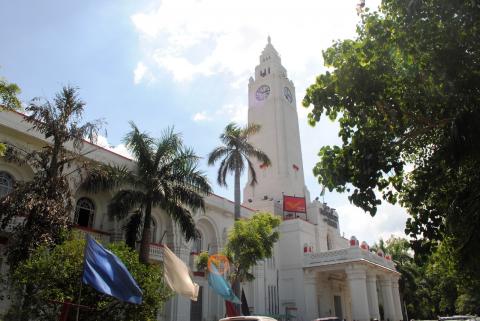India Post has an illustrious history. And not surprisingly India has the highest number of post offices and the largest postal network in the world. The history of Indian post began with the introduction of paper postage in 1852 by Sir Bartel Frere, the Commissioner of Sind in his province. These stamps were known as Scinde Dawk and were issued in three variations – embossed on white paper without color, on white paper in blue, and on vermilion wafers. Although these were withdrawn in October 1854 on the introduction of the regular India Postage Stamps. The first stamps to be designed and printed were blue lithographed half anna stamps showing the profile of a young Queen Victoria.
Postage stamp, which began as a piece of paper in token of receipt of postage, have been used to commemorate, celebrate, and promote national heritage and events. And hence there are two categories of stamps. The first, “token of postage” is meant for day-to-day use as a token of payment for postage on mail articles. The second, “Cultural Ambassador”, is designed and printed specially in limited quantities, and generates great interest among philatelists and collectors. On National Postal Day, we take a look at postal museums in India -
- National Philatelic Museum, Delhi-
The National Philatelic Museum, housed in Dak Bhawan at Sansad Marg this museum is a place for discovery for everyone. The museum is divided into two sections: chronological and thematic housing every stamp post-Independence onwards. Some of the unique stamps in its collection stamp on India’s first Mt. Everest expedition, the first man on the moon, 100 years of telephone services. An interesting stamp can be spotted depicting Gandhi being thrown out of the train at Maritzburg Railway Station, issued in 2007.

- Philatelic Museum, Lucknow
The General Post Office in Lucknow also houses a Philatelic Museum. The building itself is from the british era and the verdict of death sentence for Ram Prasad Bismil, Chandra Shekhar Azad, Bhagat Singh and Ashfaqulla Khan was issued in the historic GPO premises. The museum’s collection of stamps dates back to 1856 till date. The museum has stamps from the first Jai Hind series, scenes from ‘Meghadoot’, ‘Abhunasasakuntalam’, portraits of Dayananda Saraswati and Ganesh Shankar Vidyarthi, and a series of five stamps issued as a part of the Wildlife Week and on the dance forms of India, among others.

- Postal Museum, Kolkata
The Postal Museum in Kolkata is located just behind the General Post Office. The museum has 3 sections. The first section displays stamps, postcards, revenue stamps, maps, postal saving certificates, photographs and other important documents. The second section has brass plates, sea signaling lanterns, weighing scale with standardized weights, and a large leather chest. The third section has some equipment used by the postal departments like a vintage telephone handset, telegraph machines, flag-raising mechanism, bugle, a bell metal stamps, etc. One should definitely look out for the postal certificates signed by CV Raman (check for other eminent names as well)and a postal saving book owned by Rabindranath Tagore and maps of old Calcutta amongst the treasure trove.

- Sandesh Museum of Communication, Bangalore
Sandesh Museum of Communication in Bangalore also houses a section of philately frames. One can see a Philascop here, a postage stamp viewer that magnifies the stamp. One can also find a Signascope. It's a machine that reveals many aspects of the stamp like its watermarks, grills, paper irregularities, etc. It is used by experts to verify the authenticity of the stamp. The museum also has large post box models as well as vehicles (cycles and a bike) used by postmen to deliver letters like the Caixa Postal box, used during the Portuguese times.

Cover Image credits: Wikimedia Commons

